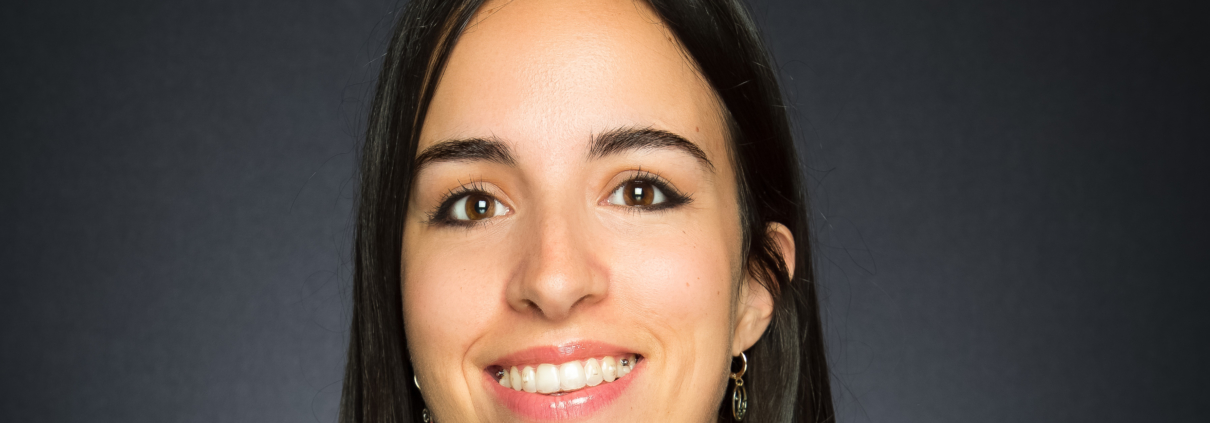Interview
“The palate is the roof of the mouth and the base of the nose. If the palate doesn’t develop properly, breathing can’t happen properly.”
Dr Lucia Voces, Dentist specialising in orthodontics
Lucia Voces studied and practiced as a dentist in Madrid for over three years. She then moved to Switzerland for private reasons, motivated to learn another language and immerse herself in another culture. After two years in an orthodontic clinic based in Montreux, she joined the Smile and Care team in Les Eaux-Vives.
Why did you decide to do orthodontics?
Orthodontics requires excellence, perfectionism, and empathy. I love attention to detail, having the chance to improve smiles, being able to provide a perfect result, better swallowing – and ultimately, a better quality of life for patients. I enjoy taking care of the patient in general. I’m a meticulous person, and orthodontics is the art of the finer details. I feel I’m in my element: it requires meticulous attention to detail.
For what types of treatment do patients consult an orthodontist?
There are three main reasons for consultation:
- Children: By the age of 10, most of the permanent teeth have come in – and indeed, it’s at this age we recommend having an initial check-up. If you put it off for few years, treatment will generally take longer. At this age, orthodontics can be used to correct problems with breathing, swallowing, or lack of space.
- Adults: In adults, the problems vary: missing teeth need to be replaced by implants or require restorative work. Orthodontics is used to prepare the implant sites. Very often, orthodontic treatment is used to correct sleep disorders – particularly snoring – as the jaw often suffers from growth problems.
- More aesthetic care, such as the alignment of teeth. Very often, though, there is significant dental work to be done.
What types of dental care?
The consequences of problems in jaw growth are clear and uncomfortable, such as breathing difficulties. Depending on how the palate grows, when a child breathes through the mouth, this exerts negative pressure on the palate and the tongue isn’t properly positioned. The palate is the roof of the mouth and the base of the nose. It’s all linked! If the palate doesn’t develop correctly, breathing can’t happen properly, either. It is very important to correct this as early as possible – sometimes with the support of speech therapists.
What do you enjoy most about your job?
The chance to work with children. The orthodontic profession is also manual work, involving fine finishing touches. It’s not a rote job, you have to have a feel for it. So, I think I’m made for this profession.
What qualities do you think are needed to do this job well?
You have to be meticulous and a perfectionist, and to communicate good energy to patients. I’m naturally enthusiastic; I like to smile, and the patients feel it. I try to give off a good, dynamic, and positive energy.
How do dental technologies help orthodontic treatment today?
They enable us to plan treatments as accurately as possible, and to draw up a treatment schedule before we even begin. Using cephalometry (dental X-rays), I’m able to very precisely measure how many millimetres the teeth need to be moved, and in which direction. My aim is for the results of our treatments to be long-lasting, not just cosmetic.
What type of orthodontic work do you perform on children?
With children, we work both on the jaw to ensure there’s enough room for the teeth, and on alignment. As I’ve already mentioned, good orthodontic treatment has a positive influence on phonation (the utterance of speech sounds), breathing, and swallowing. We work with speech therapists and osteopaths where necessary.
And with adults?
We also work on aligning teeth (Invisalign aligners or braces), correcting bruxism (the grinding of teeth), or preparing the necessary space for future implants.
Aesthetic orthodontics is proving popular with many people. What are your thoughts on this?
I think aesthetics are important: a smile says a lot about a person. As Coco Chanel used to say, you don’t get a second chance to make a good first impression. Today, Invisalign treatments are invisible and painless. Many of our patients seek perfection… and I’m a fan of detail.
What are your professional development goals?
I’m lucky enough to be able to share my knowledge and skills with my colleagues. Smile and Care has two clinics that are recognised for their excellence in orthodontic care. We have real talent here, both in terms of know-how and interpersonal skills. I want to help us become the benchmark dental clinic for orthodontic care.
Why did you choose to work for Smile and Care?
I especially enjoy working at Smile and Care because we offer all dentistry disciplines. This enables us to take a holistic approach to patients, with a philosophy of excellence and empathy; these values are deeply rooted, and ones I am sensitive to. We also have a great team spirit.







